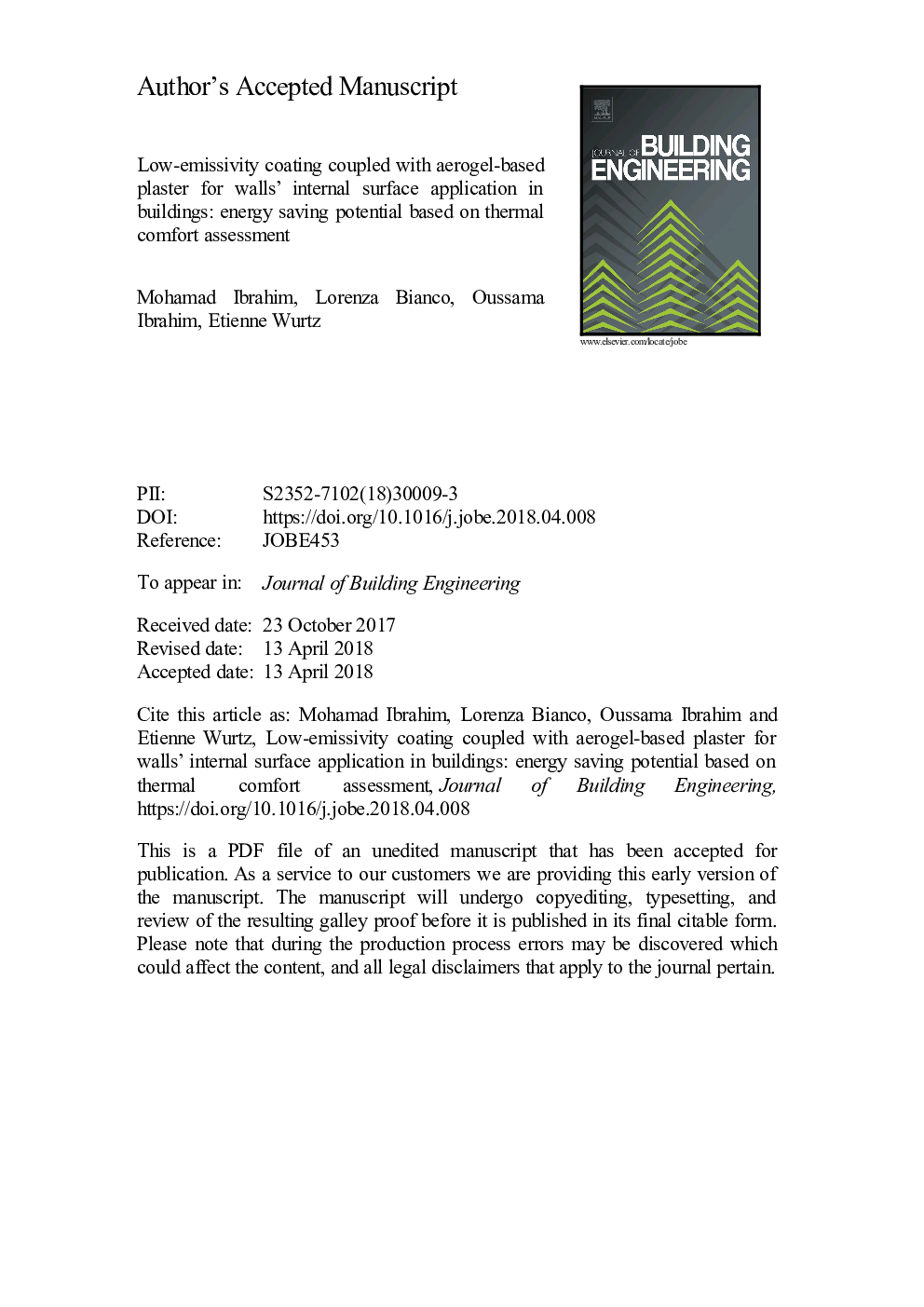| Article ID | Journal | Published Year | Pages | File Type |
|---|---|---|---|---|
| 6749929 | Journal of Building Engineering | 2018 | 42 Pages |
Abstract
Building envelope reflective finishing can play a major role in the energy saving of buildings. Extensive research demonstrated the influence of such a finishing on the external surface of horizontal and vertical walls; however, research on low-emissivity (low-e) finishing at the interior surface of vertical envelopes is hardly found in the literature. Accordingly, this study starts with a state-of-the-art on low-e applications in buildings. Dynamic simulations are then carried out to investigate the thermal and hygro-thermal behavior of envelopes with interior surface low-e coating, during heating and cooling season in Lyon, France. A new methodology to simulate the operative temperature of the indoor environment, considering the emissivity of the indoor surfaces, is proposed. Results showed that the energy-saving potential of low-emissivity finishing is major when applied to low/non-insulated buildings, particularly when considering thermal comfort. A foreseen application is to couple this technology with a system that controls the indoor operative temperature, reaching energy saving potentials of between 7% and 13%. If an operative-temperature-based control is implemented at a position near a low-emissivity surface, energy savings of up to 22% could be achieved. Beneficial contribution is obtained when simulating low-e coating coupled with interior aerogel plaster, where energy savings of 21% and 30% are obtained for 0.5â¯cm and 1â¯cm of aerogel plaster, respectively. This thin layer of aerogel plaster demonstrated also to be effective in retrofitting existing walls to reduce the moisture risks. It is worth mentioning that from an architectural point of view, a low- emissivity coating means a metal appearance wall finishing, which needs to be accepted by the occupants.
Related Topics
Physical Sciences and Engineering
Engineering
Civil and Structural Engineering
Authors
Mohamad Ibrahim, Lorenza Bianco, Oussama Ibrahim, Etienne Wurtz,
